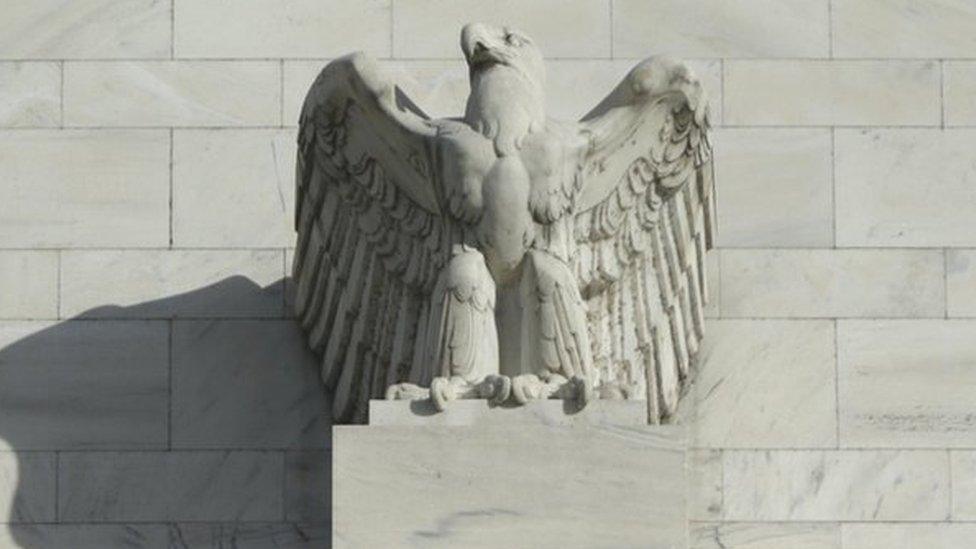Fed to start unwinding bond portfolio
- Published

Federal Reserve Chair Janet Yellen speaks to reporters after the Fed's two-day September meeting
The Federal Reserve has said that it will start to run down some of the investments it made to boost the US economy after the financial crisis.
In October the Fed will start to reduce a $4.2trn portfolio of US Treasury bonds and mortgage-backed securities, it said.
It will initially cut up to $10bn each month from the amount it reinvests.
It also said it will hold benchmark interest rates steady, and signalled a rate hike by the end of 2017.
The move to unwind the portfolio the Fed acquired during its crisis-era bond-buying programmes was widely anticipated.
What is the US Federal Reserve doing?
Analysts say the decision could lead long-term borrowing costs to rise modestly.
But Federal Reserve Chair Janet Yellen said she believes the US economy is ready for less economic stimulus.
"We feel the economy is performing well and we have confidence in the outlook," Ms Yellen said.
Fed officials are predicting economic growth of 2.4% in 2017, a stronger expansion than they anticipated in June.
Ms Yellen said the hardship caused Hurricanes Harvey, Irma and Maria may hurt growth in coming months but she does not expect it to "materially alter the course of the national economy in the medium term".
"Growth likely will bounce back," she said.
Ms Yellen said officials were watching inflation closely. This year, it has lagged below the Fed's 2% target and the forecast now suggests it will continue to do so in 2018.
Ms Yellen said she thinks the sluggish inflation rate is the result of temporary factors including lower cell phone costs that don't reflect underlying economic trends.
But she acknowledged some uncertainty: "Our understanding of the forces driving inflation isn't perfect," she said.
Despite the lagging inflation, a majority of officials see room for another rise in the key interest rate target set by the Federal Reserve before the end of the year, according to the economic forecast released after Wednesday's meeting.
But the predictions may be less useful now, because of the high number of vacancies in key Fed positions, said Mekael Teshome, an economist for Pittsburgh-based PNC Financial Services Group.
Market reaction
Policymakers have signalled their plans for the Fed balance sheet for months in an effort to avoid rattling markets.
US stocks initially fell after the announcement, but pared losses by the end of the day, with both the Dow and the wider S&P 500 closing at new highs.
"Today's meeting really was just confirmation of what we already knew," said Mr Teshome. "It's the beginning of the end for these extraordinary measures."
The Fed pursued three rounds of quantitative easing between 2008 and 2014 to stimulate the economy after the 2007-2009 financial crisis and recession.
Mr Teshome said the economy should be able to handle the shift as the Fed stops reinvesting proceeds from those holdings.
"The slight upward pressure [on rates] won't be enough to derail the expansion," he said.
- Published20 September 2017
